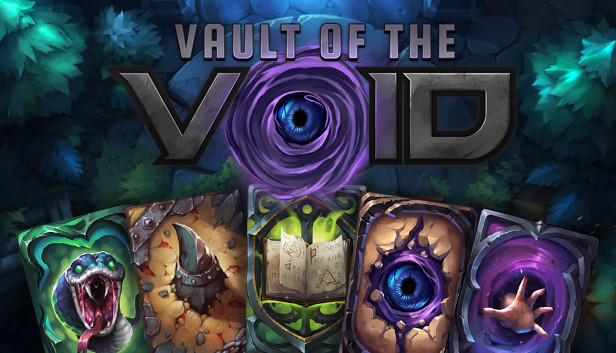So I played Slay the Neogrift Trainverse. What’s different here? A lot, actually. If you are a Vault of the Void beginners, this guide will show you some useful tips, let’s check it out.
What Makes VotV Special?

In Battles
- Blocking is reactive – that is to say, you Block the turn after enemies attack, rather than before – this means you will almost never need to Block on turn 1. This is a really significant change because…
- Cards and Energy carry over between turns so “preparing Block” means leaving a Block card sitting in your hand unplayed. Generally speaking, decisions are much more interwoven between turns, in large part because…
- You can sacrifice cards for Energy by “Purging” – and not just one per turn or such, any amount you want. If you’re not playing it, you’re probably Purging it to fuel whatever you are playing… or maybe you’re leaving it to play later. You’ll almost always have three choices on what to do with a card – play it, don’t play it but hang on to it, or Purge it to fuel other cards.
- Enemies often get reinforcements in a way that’s clearly communicated but often a bit different for each battle – sometimes it’s not just about killing an enemy ASAP, but about killing multiple at the same time to fill up the Battle Progress Bar so no enemy shows up to replace the one you just killed.
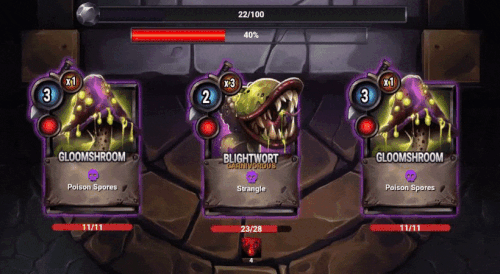
- Enemies ramp up as much as you do, if not more – a majority of fights have enemies that can keep stacking damaging debuffs on you, increase their own strength, etc. In exchange, fights are generally short and a lot of your strategy is in staying “ahead of the curve,” not just maximizing what you’ve accomplished with your immediate hand.
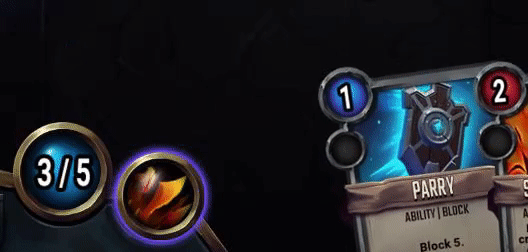
- You have a spell on a cooldown available at all times – the spell you start a run with will vary by class and starting archetype, and you can earn or purchase new ones in a run, but you’ll have an extra ability to help mix up your turns or get you out of a pinch – apply a bit of a debuff, do some extra damage, dig a bit deeper into your deck, etc. Which adds another layer of control – your spell means there’s something you can be sure you’ll have access to, regardless of your draw, while deciding when to save it versus using it on cooldown is one of many bits of inter-turn planning you’ll have to engage in.
- There’s not much RNG – the most you’ll see is minor effects that deal damage to a random enemy target, and those are in the vast minority. You know how much damage you’re doing, to what target, and how much is incoming, all clearly indicated by damage projections on the user interface. Even the basic card game conceit of “your draw is random” is dulled by the fact that you can keep cards. Afraid of not drawing Block on a pivotal turn? Just leave a Block card sitting in hand and there you go.
Elsewhere
- IT’S NOT A DECKBUILDER, no, really. I mean, you have a deck, you can build a deck, but it isn’t actually “a deckbuilder” – your deck is always 20 cards and you can choose what to put in and take out when. You aren’t trying to remove or dilute the bad and add good while avoiding bloating or such – it’s just about picking the best tools for the job at any moment. If you’ve ever been aching for a sideboard, this is the game to give it to you.
- There’s both upgrades *and* Void Stones giving you a lot of control over what exactly your deck’ll look like. Sometimes, you might upgrade a card specifically to make use of a certain Void Stone well – other times, you can afford to leave something un-upgraded because you can fulfill what you would’ve gotten out of the upgrade with a Void Stone, saving your upgrade points for something else. Deciding which cards to specialize how are a big deal – do you want to upgrade your cheap attack and give it a Void Stone to be able to use it twice in a row, or just leave it un-upgraded with a damage buff Stone on it so you can play it as a lead-in to others?
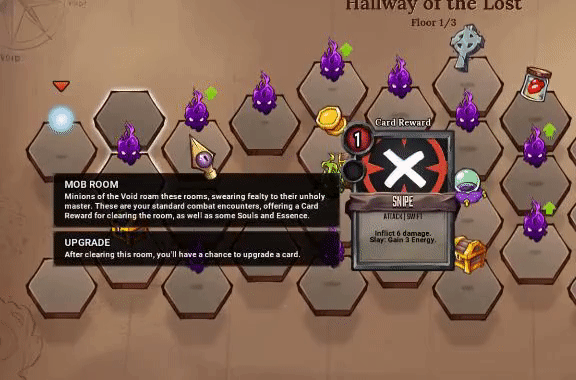
- You can see the rewards ahead on the current floor, which is 50% of the game. Rather than choosing what to add to your deck in the heat of the moment after every fight, you have a lot of room to plan out exactly where you want to go and what you want to obtain. There’s still plenty of dynamic elements, since you don’t know what’s in shops or chests but overall you’ll have a lot more control over which cards you end up with than most games in the genre. Planning out your route through a level, and adapting it in response to later discoveries, is an entire satisfying layer of VotV’s gameplay.
- Every run ends in a boss rush of sorts – rather than a bunch of regular encounters on the final stretch of the game followed by a single boss, you’ll fight the Floor 2 Guardian, a pair of Vault Guardians (which you’ll be able to choose out of a set of four) and the final boss all in a row (healing after the Floor 2 Guardian). This means you’ll have your deck and backpack alike tested from a variety of angles and get a chance to really see it in action, instead of having merely a single climactic fight before it’s all over – if you win a run, you really know you could take on anything.
- You can carry any amount of potions but only use them pre-combat, in exchange for them tending to have significant impact. If you see a boss upcoming that you know you’ll have trouble with with your current setup, you can easily drop multiple powerful buff potions at once to have a larger hand dealing more damage with more energy, on a debuffed target.

- There’s two currencies with an inpromptu third one. Essence, which you’ll get mainly from fights with a healthy bonus for beating a fight without taking damage, is what you’d expect – you use it buy things in various shops. Souls, however, are rarer and usually gotten in non-trivial amounts from Elites or by opting out of healing/cleansing at a Shrine, and you’ll have fewer chances to spend them, but often for really valuable things like duplicated cards or high-quality artifacts. You’ll get a trickle from standard encounters, but they’re mostly the “currency of risks taken.” And the third way you’ll have to <insert Disney Villian voice>”pay for things” is by taking on Voids into your deck… which can be cleansed at a shrine. Get Souls at a shrine now and spend them in a shop later, or get Voids in a dark deal now and cleanse them away at a shrine later? Depends on how your run’s going and what’s up for grabs!
- There’s not much RNG on the map either. While you won’t know exactly what’s in a shop, the price point distribution will be pretty reliable. No stumbling into a random “this is an event of some sort” tile here. You might know you can pay Essence for some color of Void Stone, or a chance to pay Essence/Souls or take on Voids in exchange for an artifact, or have a choice of artifacts distributed evenly across rarities and price points. You’ll almost never be thinking “dang, I hoped there would be something there, but instead I just wasted a step.”
Fighting Battles
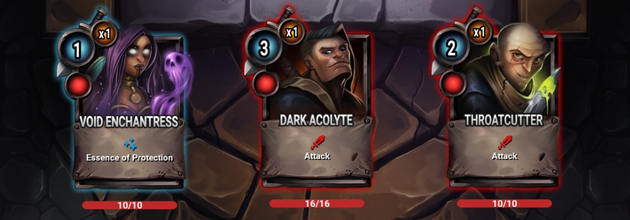 Everything below this point assumes you’ve at least played through the game’s introduction or seen some gameplay of it online – it won’t be explaining the very basic-est basics of the controls or such.
Everything below this point assumes you’ve at least played through the game’s introduction or seen some gameplay of it online – it won’t be explaining the very basic-est basics of the controls or such.- Unless you have a particular reason not to, you should generally try to Purge your hand clean each turn. You can normally only draw up to 5 cards at the start of each turn, so every card already sitting in your hand is one less card you’re drawing – and every card you’re drawing is an extra Energy. Every card left in your hand is a card you could’ve Purged, so you’re essentially paying one Energy per reserved card.
- In light of “every card you draw being an extra Energy” thanks to the option to Purge cards for energy, this also means you can view “Rebound” and “draw a card” as effectively reducing a card’s cost by 1. If you play a card that draws a card, and then Purge the card it draws, you’re back to the same Energy you started with – except you also had the option to Purge something else and play the new card in the process. Drawing and Rebounding doesn’t just give you options – it gives you Energy to fuel *other* options!
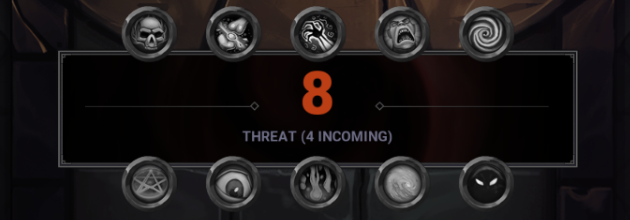 Keep an eye on incoming damage next turn, and if looks worrying, check what’s left in your deck. Pretty often you’ll have a single digit amount of cards left in your draw pile and thus have a pretty good idea of what sort of hand you’ll have. If there’s 7 cards in your draw pile and 4 of them are Block cards, you’re probably safe not leaving a Block card in hand – you’ll draw at least 2 anyway.
Keep an eye on incoming damage next turn, and if looks worrying, check what’s left in your deck. Pretty often you’ll have a single digit amount of cards left in your draw pile and thus have a pretty good idea of what sort of hand you’ll have. If there’s 7 cards in your draw pile and 4 of them are Block cards, you’re probably safe not leaving a Block card in hand – you’ll draw at least 2 anyway.- Check out how much killing each enemy fills the Battle Progress Bar at the top – in many encounters, the best way to solve them is to set up a synchronized kill on two targets, rather than just rushing a single one down ASAP. And on that note, pay particular attention to enemy Passives triggered when other enemies die – often, killing a single target at a time will only give you a single turn of respite before it’s replaced by reinforcements, and other enemies are buffed by its passing. Different fights have different paces, so get to know them!
- Keep in mind which buffs/debuffs scale in intensity and which ones merely scale in duration. Applying 5 Slow to an enemy means not only will it last 5 turns, but they’ll have 5 less attacks this turn, 4 the next, etc, totally neutering an enemy that depends on spamming attacks, whereas Weak will simply last longer. Some are even mixed – Overcharge will only ever give 1 extra Energy per turn and a higher number just increases the duration, but your *maximum* energy is increased more by being Overcharged more.
- Cards that refer to discarding are also triggered by the Sift keyword (discard from your deck) – meaning that if you just re-shuffled your discard pile back into your draw and play a card with Sift, you can basically choose to discard almost any card in your entire deck to trigger discard effects!
- Many Artifacts have a counter that goes up each time you do something, and then does something when it hits a certain number. These counters often carry over between combats! If you leave one of the precipice of triggering on the final turn of a battle, it’ll be ready to go immediately in the next.
Building Your Deck
- Focus on putting Void Stones in cards you’ll play consistently or repeatedly. Things that cost 0, Rebound, or that you’ll often target with Recur to pull back from your discard to hand. Or just cards that you can easily trigger repeatedly! Cards that can trigger multiple times, or will often be targeted for multi-triggering by other effects, are ideal targets for a Void Stone you can never get enough of! Think about which Void Stones you feel are most important to you, and save slots in your cheap Rebound cards and such for them.
- Keep in mind that in some cases, there’s too much of a good thing – but in others, you can almost never have enough. Getting more Block isn’t always useful if it tends to be more Block than you need to use at one time anyway, and applying 6 Weak instead of 4 to an enemy isn’t often likely to matter much – but dealing more damage will always help close out a combat even faster.
- Upgrading a card that inflicts Vulnerable when you already have a few ways to inflict it is almost useless (unless it’s an excuse to streamline your deck and only run one powerful, consistent source of Vulnerable), but upgrading your one source of Weak might let you keep it up on a single target near-constantly and give you a huge degree of reliability to depend on.
- Ideally, upgrades should be force multipliers, or already the target of another force multiplier. Giving +3 damage to a basic attack isn’t a huge deal. But if it’s a basic attack you almost always save up some Combo to trigger 4 times in a row? That’s a way bigger impact. On the same note, adding Rebound or reducing the cost of a card can be a particularly big deal if you’ll put a Void Stone in it that it’ll now get to trigger more often, or if it feeds into an artifact you possess.
- Focus on either the things you’re worst at (getting consistent access to debuffs you lack) or things you’re best at (getting even more Bleed, Combo, Corruption, what have you, with the goal of winning that much faster before things can get scary). Upgrading a 5 Bleed card to an 8 Bleed card means it’ll do 30 damage (8+7+6+5+4) over the next 5 turns, instead of 15 damage (5+4+3+2+1). And then that’ll benefit you even more if you trigger Bleed damage extra times! And if it’s a card you’re willing to Rig using a Green Void Stone, that’s a benefit you’ll see, immediately, every battle – and if you have a way to trigger that one card repeatedly, oh boy – that upgrade on your common card may well add up to 50+ damage over a combat.
- When it comes to expensive buff cards, consider how likely you are to be willing to play it when it comes up, and take a rough guess of how long your combats go on (5 turns is a decent general standard) to try to get a sense for how much you’ll get out of it. If you use, say, Bulwark (draw 1 card the first time each turn you play a Block card), and you put a Green Void Stone in so you’ll always play it turn 1, and you expect to play a Block card almost every turn, that means you’ll be spending 3 energy up front to get 4 or 5 cards over time. Good, but not that great. On the other hand, if you’ve got a defensive deck that’s taking longer, the expected value of it goes way up. With buff cards, don’t just assume “I play the thing it interacts with, so the buff’s good for me” – think about how much use you expect to get out of it and if you might be better off with just an extra attack or ability instead. Rigging a powerful attack or debuff instead of a buff is a very real option.
Planning Your Route
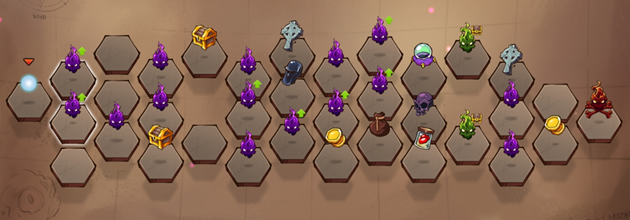
- Forcing yourself into a corner for a step is actually often a good idea – normally, every tile that you didn’t choose (so all the adjacent ones to the tile you stepped from) is destroyed upon stepping on a new tile – but if there’s only one way forward, that will never be destroyed. This allows you to get a series of tiles next to each other when they’re near the edges of the floor that wouldn’t be possible if they were grouped in the center.
- Make liberal use of the ability to check card rewards (clicking cards on this screen highlights their tiles on the map!) and the ability to paint tiles by right clicking. Once you’re marked down everything you consider a high priority, your route may all but plan itself.
- Take a moment to think about what the various places to spend Essence or Souls are on your current floor, and how much you’re likely to have when you get there. If you have a choice of going Shrine -> Elite -> Shop or Shop -> Elite -> Shrine, there’s a lot to think about – hitting the Shrine last means you’ll be ready to heal if the Elite does a number on you, but hitting the Shrine first means you’ll be able to have that much more Essence come time to go shopping.
- Be ready to adapt your route in light of which artifacts you get, which cards you see in treasure chests or shops, etc. Getting a powerful buff card may change what kind of deck you want to make, so it’s worth taking a route that gives you options. At the same time, if your health’s running a bit low, it’s a good idea to have a less dangerous path planned that’ll still get you some worthwhile rewards.
- If you aren’t sure if you’ll be able to comfortably take on an Elite, keep your options open – which potions you end up having at the time might change your mind!
- You might find secret rooms! If you step into an empty space along the top of the floor with nothing to the top-right (or a tile along the bottom with nothing to the bottom-right), there’s a chance there’s a hidden treasure chest there – but before you go looking for them, be sure to ask yourself if it’s even worth it, because you might be missing out on worthwhile rewards you’d get zig-zagging along the main path.
- Each of the three options you get from a Shrine can be incredibly impactful – in particular, cleansing away 2 Weaknesses at once can make a huge difference, but you’ll often find yourself having just a single Void (frequently from a Cursed Item). If you already have a Void and see a Shrine ahead, look around for any sort of dark deals that might leave you with another one – usually, you’d find yourself being saddled with a negative card in exchange for a powerful tool, but if you’ve already got one Void to cleanse, getting a second one to cleanse together with it is like paying one price for two purchases!
- You’ll often find yourself having to make a choice between ‘Greed at this Shrine but avoid the upcoming Elite’ or ‘Heal at this Shrine and fight the Elite, but I won’t have much to shop with’ – it’s actually a pretty close call! The value of an Elite’s artifact is generally a little bit higher than what you get from Greeding at a Shrine, and that’s to say nothing of the better general loot from one. If you think there’s a real chance you’ll die, or if there’s something you wouldn’t mind getting instead of the Elite’s card anyway, go for it – you’ll likely to able to spend that money on something nice. But overall, healing to take on a harder fight tends to be pretty worth it – same applies for buying potions just to help you fight an Elite.
- Early on, consider focusing on getting cards that’ll help you get Perfect combats. Getting a solid buff or expensive, huge Block might be handy later down the line as things ramp up in scale and power, but early on getting your hands on a consistent common card can help make the difference between taking some damage from a fight, or being able to end it a little faster/block a little bit better, handing you perfect after perfect. A single source of Slow or Weak can easily hand you multiple Perfects, as can a simple but big brute force attack you can use to take out dangerous glass cannon enemies ASAP! Consider going after upgrades the same way – there’s a real chance your starting booster pack handed you a card that, if upgraded, will let you get Perfect combats a lot more easily. Keep that in mind if you find yourself choosing between getting an upgrade now versus a card that might be handy later in the run.
- Don’t get into totally unnecessary fights – the HP of most enemies actually scales based on how many rooms you’ve been through, so it’s not really worth fighting enemies if you don’t get a useful reward from them, especially if you aren’t likely to secure a Perfect combat to get some decent Essence.
Planning Your Route (Daily Draft)
- If you’re trying to finish as quickly as possible, consider picking enemies that are quick to kill, rather than ones that are easy to kill completely safely. If you want a score to show off, you’ll need to take small chances of failure to speed up your game plan. A bunch of 6 turn perfects might be better than 5 turn battles where you took damage – but a bunch of 3 turn perfects with a single bit of damage taken mixed in there? That’ll beat them both.
- Plan for which Void Stones are going into which cards, and be sure to leave those spots open. That small debuff you usually play when it comes up and may as well throw a Block or Overcharge stone into? You may well find yourself wishing you had put a Black in there to play it twice over when you reach the final boss and find you need even *more* of that debuff.
- Even though you won’t have anything new to add to your deck throughout the run, you can still make use of your backpack! You’re not committing to a single deck – it’ll always be an option to swap some cards in and out depending on the combat. You can even start out with a deck that’s almost all offenses, and only get some Blocks and debuffs in when things get more difficult! A rigged Buff card that synergises with playing consistent Blocks may be the cornerstone of your plan for perfecting the last boss, but it might not even deserve a spot in your deck for the first few fights you plan to blitz through.
Progression
You get these for playing, and use them to unlock card backs and Challenge Coins. The system might not be too fancy, but the card backs just might be!
Card Backs are what you’d expect – show up in the Vault to show the Void your style. Ah yes, spoilers, the Vault belongs to a Void, by the way.
Challenge Coins are cute little variations on runs you can purchase with Void Points to unlock playing them whenever you want – these will start you off with different cards, artifacts and conditions. Some’ll be a breeze, some’ll be punishingly difficult, and some’ll just be plain weird. And there’s achievements for beating them, if you’re into that sort of thing! You know who you are. I’ve seen your Steam profile.
Each time you beat a run with a certain class, you get to pick one of 10 class commons to “master.” When playing on Normal or Hard difficulty, you can choose one of these 10 cards to start out with each run – a great chance to jump start your deck’s synergy, cover for a weakness, or just help push your deck towards being whatever you’re in the mood for today.
Once you’ve mastered all 10 cards for a class, you’ll also unlock a reroll for the starting booster – which IS usable on Impossible difficulty. This means you’ll get to replace one card from your starting booster with another random one of the same rarity – so replacing your uncommon will get another uncommon in its place, guaranteed. Oh, and any boosters you pick up as end-of-floor rewards too. You won’t always pick another one, but a chance to turn a card you wouldn’t use into one you would is always great!
It’s worth trying to get a few different kinds of cards with your first mastery chances to be ready to adapt to starting boosters – you may find yourself lacking good attacks or good block and want to plug up a gap, so once you’ve got the card(s) that build on your favorite strengths, it’s worth getting some contingency plans in place.
Oh, and if it’s your first run with a class, don’t worry, you can always pick a health potion instead of a mastered card, and health potions are pretty great. If that health potion ends up giving you an excuse to take down an Elite you otherwise would’ve shied away from, it may well end up being a much better deal than starting out with an extra common card!
Difficulty Settings
The three difficulty options form a straightforward continuum – from Normal to Hard and from Hard to Impossible, you can expect enemies to have more health, hit harder, and for their passives to be stronger. An enemy that does 2 damage when you attack them on Normal might do 3 on Hard and 4 on Impossible.
Impossible isn’t as impossible as it sounds, but it’s definitely not for the faint of heart and not every run will give you a path to victory. Just get used to not getting as many Perfect combats and having to play it a little… or a lot… safer than you normally would.
The Hidden
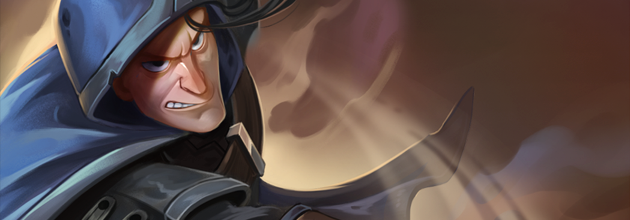
- Combo depends on Swift Attacks, so keep an eye out for both class and neutral cards that fit the bill – in particular, 2 cost Swift Attacks are a fantastic way to maximize the value you get out of every point of Combo – and because your Swift Attacks are going to be triggering repeatedly, upgrading them or putting in powerful Void Stones will also experience an exponential explosion of power.
- The second cut is the deepest – your first For The Throat will do 15 damage over 5 turns – whereas your second one will add 25 to that (going from 5->4->3->2->1 to 10->9->8->7->6). Bleed’s always a good deal, but the more Bleed you add, the better of a deal it is – and that’s not even going into cards that can trigger Bleed damage more than once per turn. Just keep in mind Bleed’ll tick on the enemy turn, so make sure you’ve hunted down some decent Block.
- If you’re going to make use of Combo, it might be worth trimming down the amount of Swift Attacks in your deck in the long run. You might not have as many places to use Combo, but that means you’ll be able to save it to maximize its impact on the cards you really *want* to multi-trigger – and the Void Stones on those cards.
- Your starting artifact is a really unique one in changing how you view the map: it means empty spaces are actually a pretty good deal! Keep that in mind when picking where to go – if you’re hitting the same key locations either way, you may as well pick a path that hits an extra empty space or two to power up Sneak Artist!
The Daughter
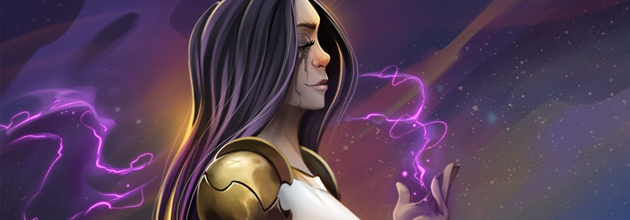 Where the Hidden’s a violent assault, the Daughter is an insidious takeover – you’ll be gaining Corruption constantly, whether gradually accumulating it from Purging cards, or rapidly gaining it from Soultithe – setting yourself up to take damage next turn in the process. And the turn after that, and after that…
Where the Hidden’s a violent assault, the Daughter is an insidious takeover – you’ll be gaining Corruption constantly, whether gradually accumulating it from Purging cards, or rapidly gaining it from Soultithe – setting yourself up to take damage next turn in the process. And the turn after that, and after that…
The Daughter’s strongest tools will use her Corruption to deal ever-rising damage, but she’ll have a harder time killing enemies early on, needing to use her solid access to debuffs and powerful Block cards to survive until she powers up. But once she does, she’ll hit harder and more consistently than almost anyone else – a major feature of the class is a lot of ways to both thin your deck (Sift, which removes cards from your draw pile, ensuring you’ll be drawing the things you most want) and get cards back from discard (Recur, which puts a card from your discard pile back into your hand, letting you play your most powerful cards over and over in a single turn).
You’ll have a lot to manage with a two-stage game plan, and a lot of choices – you can ensure power comes more quickly, but at a cost of even more incoming damage to have to deal with. You can also just let it trickle, but enemies tend to be powering up too, and you’ll need a lot of defensive tools to keep yourself safe as you wear down your enemies with ever-growing dark magic… Helping all of this along is her starting artifact allows you to freely move Void Stones between your cards at any time, helping her delicate game-plan adapt to ever-changing threats.
Or maybe you just want to beat them over the head! The same self-damaging Soultithe that can get you Corruption more quickly can also be used to power up her expensive, big attacks to hit an extra time with Deathstrike. You’ll still be building up Corruption on the side to hit hard later, but in the process you might be able to pick off a defensively weak but highly damaging enemy right out of the gate – but you may find yourself being your *own* most damaging enemy in the process.
- Since you can take them out later, be sure to use your Void Stones freely. Better something than nothing!
- When playing Corruption-gaining cards, keep an eye on your Energy. Paying 1 Energy to get 2 Corruption might sound reasonable, but Purging the card would gain 1 Energy and 1 Corruption. Sounds kind of like paying 2 Energy for 1 Corruption now, doesn’t it? Sometimes you’ve got Energy to spare and it’s worth it – it’s often reasonable to Purge most of your hand on turn 1 to help get a jump start, and at that point you’ve got Energy to spare – but always keep in mind that Purging gets a lot done. It’s even worth Purging when already at full Energy!
- Death Strike is already a powerful tool on expensive cards, but it’s an even *more* powerful tool when you make your expensive cards cheaper. Triggering a 3 cost card means you require 3 levels of Death Strike – but if another card or artifact makes your 3 cost cost 1 instead, you’ll only need – and lose – a single level of Death Strike.
- You’ll most often deal Corruption damage using abilities – but attacks that deal damage based on Corruption are particularly handy because they can trigger the aforementioned Deathstrike and benefit from Rage – at the same time. And on a Vulnerable target too! Try dealing 100% of your Corruption damage, with a 50% Rage bonus, with an extra trigger from Death Strike… on a target taking 50% (or more!) extra damage from Vulnerable. Accept no substitutes!
- Between Rebound and Recur, it’s possible to find yourself playing a single card 3, 4 or even more times in a single turn – having a powerful Void Stone on that card can single-handedly change how your turn plays out. Maybe you now have Overcharge enough to last the rest of the fight, or enough Rage to do double damage with everything – or maybe you just Blocked as much as a Shield Wall!
- Some cards, usually upgraded ones, have effects when Purged. While normally this is already fantastic for the Daughter due to getting Corruption from Purging already, but alongside Recur it can be almost unfair! If you have a card that has Rebound and Recur, you can Purge a card with a Purge effect, then Recur it, Purge it again, Recur it again, and Purge it a third time. Every time you Purged it, it refunded you an Energy, likely paying for (most or all) of the Recur you used to get it, and getting you a ton of Corruption in the process. Same applies for Discard – use a Blue Void Stone Recur card to pull something out of your discard, and instantly discard it as you do so, triggering its discard effect, and getting a draw out of the Blue Stone in the process!
- You’re likely to find yourself with a lot of sources of Sift. While Sift is great for triggering discard effects on cards still in your deck, giving you a huge degree of reliability, it also does something else: give you an excuse to get Voids! Sift gives you the option to send any Weakness cards that find themselves in your deck straight from your draw to your discard, bypassing your hand where they’d waste space. There’s even some cards that benefit from having more cards in your discard, turning them into a temporary positive! If you know you’ve got Sift effects for days, consider yourself at more liberty to take on Voids from encounters on the map.
The Enlightened
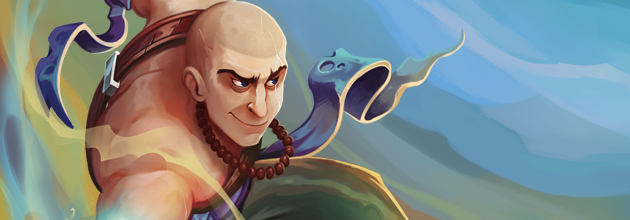 Vault of the Void is a game where you’re often playing a turn ahead – you know everything but your draws for the next turn (and if you’re keeping some cards left over or have little left in your deck, even that might be known). The informally dubbed “Time Monk” takes it a step further – you’re often playing for the next turn more than the current one. That’s when all your big hits will go off at once – this turn’s card plays are next turn’s big block infusion. You don’t need to apply Vulnerable before you attack – just before your attacks actually hit.
Vault of the Void is a game where you’re often playing a turn ahead – you know everything but your draws for the next turn (and if you’re keeping some cards left over or have little left in your deck, even that might be known). The informally dubbed “Time Monk” takes it a step further – you’re often playing for the next turn more than the current one. That’s when all your big hits will go off at once – this turn’s card plays are next turn’s big block infusion. You don’t need to apply Vulnerable before you attack – just before your attacks actually hit.
Helping all of this along is the basic mechanic of Zen. Play three of the same card type (usually meaning an Attack or Ability – good for you if you have 3 Buffs in hand at once!) and for the rest of the turn every card costs 1 less Energy, as well as triggering various card’s Zen-specific bonus effects. This changes how you view a lot of cheap neutral cards – what was a cantrip before is now a complete freebie – and is also a second level of encouragement to plan out your turns down to a science (well, the Enlightened himself would probably prefer it called an art-form).
Rounding all of this out is the simple Foresight mechanic – making a card still in your draw pile cost 0. As with Zen’s cost reduction, this fundamentally changes how you view expensive cards, especially Buffs. Basic tenants of the genre like “you want your big important Buff in hand early” are up in the air once the Enlightened gets his hands on them. In a sense, any individual turn you play isn’t ever just responsible for that turn. The future is by-and-large an open book. Decisions constantly ripple into future turns, offering more and more options to stack more and more impact into the further future.
- Future Strike triggers before Threat, so if you think you’ll win upon the next case of Future Strike triggering, no need to block, save block, establish Delayed Block, etc.
- Foresight means you’ll often choose not to rig expensive buffs so that you can Foresee them instead. Especially if you’ve already got a consistent source of Foresight on turn 1 or 2, you may prefer to see them later instead. It’s also pretty hard to get Zen when you’re spending a card and 3 Energy on a buff.
- Follow-Up cards are great targets for Black Void Stones since by definition the second time you play them will always have the Follow-Up effect trigger. Opener Cards are great targets for Red Void Stones since you want Rage early to apply to as many attacks as possible, and Openers tend to come out early.
- Banes are particularly dangerous since they’ll deny more options on how and when to trigger Zen. Particularly keep this in mind when using Rewind or Stasis to manipulate enemy actions – those Banes may well end up utterly devastating later, especially if you use many Follow-Up or Zen effects.
- In a slower, block-heavy deck, focus more on cards with larger individual Future Strike application because they’ll benefit from Fatigue significantly more. Otherwise, feel free to just focus on the total up-front Future Strike and consider Fatigue boosts purely a bonus. On the same note, a slow deck might appreciate the ability to spread out Future Strike so as to ensure all enemies build up Fatigue.
- High-cost cards will almost always be great pick-ups due to Foresight. If you’ve got a lot of high-cost cards, it’s a good case to get Foresight. And if you’ve got a lot of Foresight – good time to find some more high cost cards!
- Cheap cards with Black Void Stones are great targets for Vision effects (place from discard to top of draw) to set up an easy Zen activation for the next turn. On the same note, cheap cards that draw other cards are good ways to trigger Zen, since they add to your Chain while giving you more options to further that Chain. While it’s not quite as profoundly impactful as Recur, Vision is often easily accessed, and a cheap card that draws cards, has a Black Void Stone, or both, will put you in a position to play the entire rest of your hand all at once for cheap.
- Because Zen makes it easy to play out any amount of 1-cost cards, on average, you’ll often find yourself playing more and Purging less – something worth keeping in mind when evaluating the power of neutral cards and Items. On the same note, the fact that you’re reducing costs per-card means you’ll tend to value drawing more cards over simply gaining more energy. And if something costs a lot, you’ve already got Foresight for it anyway. Just keep playing free cards that make free cards!
- Shii wants hybrid decks to shine – a pure Future Strike deck will work well, but while Shii cards often have fantastic raw power with which to set up headsplosions, they can’t produce nearly the Fatigue over time that Future Strike can. Even if you’re planning to stick to Shii, it’s worth putting at least a few sources of Future Strike into your deck, making sure that enemies are gaining Fatigue every other turn. Shii doesn’t benefit from Fatigue as radically as Future Strike does, but it still adds up fast.
That’s all we are sharing today in Vault of the Void Basic Gameplay Tips For Beginners, if there are anything you want to add please feel free to leave a comment below and we’ll see you soon.
